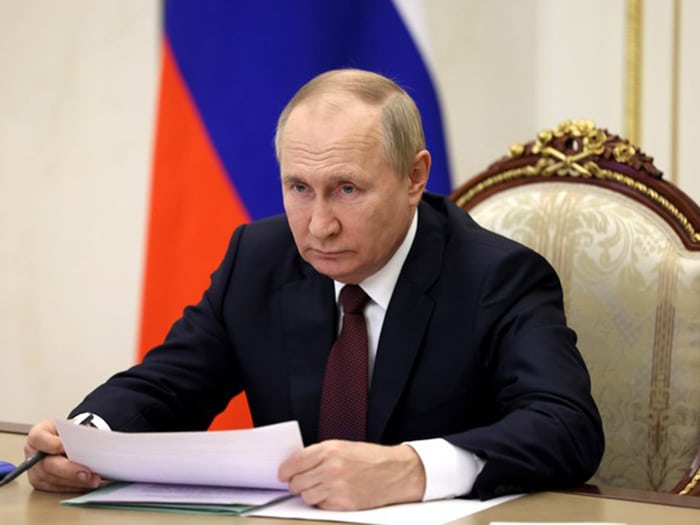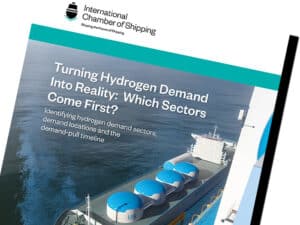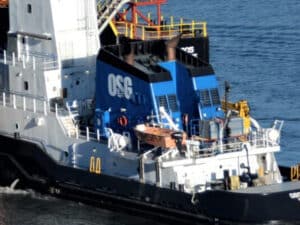
Putin’s oil exports capped at $60/barrel: Now what?
Written by Nick Blenkey
Putin says Russia will return to Black Sea grain deal if a string of demands are met
There are interesting times ahead in the tanker market. From December 5, the European Union ban on imports of Russian oil will kick in, with a minor exception for Bulgaria, which has been given longer to supply. And, on Friday, in a move meant to restrict Russian profits on oil exports worldwide, the member countries of the Price Cap Coalition (basically the G7, the EU and Australia) on Friday agreed to put a price cap of $60/barrel on seaborne crude oil of Russian Federation origin.
On Sunday, the OPEC-plus countries, which include Russia decided to make no cuts in oil production additional to those they announced back in October. That’s seen as intended to keep oil prices stable, at least for now.
What are the implications of all this? In his latest weekly Tanker Opinion, Erik Broekhuizen of Poten and Partners notes that “currently, Russia is selling its oil well below [the $60 level]. Earlier this week, Urals out of Primorsk were sold below $50/barrel.”
“At the moment, therefore, the implementation of a $60/barrel price cap may have no impact on Russia’s oil revenues,” says Broekhuizen. “It could look like business as usual, with the exception that Russian oil will no longer be sold to EU countries. While Russia has always said that it will not sell to countries that are participating in the price cap, the pragmatic approach for the Kremlin will be to cooperate as long as the price cap is above the market price (for Russian grades). There have been rumors that the Russian stance is changing since they do not want to shut in production.”
Confirmation of the $60 price cap level came in statements from the European Council, the G7 and Australia, and from the U.S. Treasury. And an official statement that Moscow will not accept a price cap came from Kremlin spokesman Dmitry Peskov
“We are assessing the situation,” he told reporters. “Certain preparations for such a cap were made. We won’t accept the price cap and we will inform you how the work will be organized once the assessment is over.”
BAN ON SERVICES
Under the price cap mechanism, members of the Price Cap Coalition will ban a broad range of services—including maritime insurance and trade finance—related to the maritime transport of Russian crude oil unless purchasers buy the oil at or below $60/barrel. Importers who purchase Russian oil at or below the price cap will maintain access to an array of Coalition-country services vital to the oil trade. On February 5, 2023, this ban on services will extend to the maritime transport of Russian-origin petroleum products unless the products are sold at or below a price cap to be announced before February 5, 2023.
HOW THE PRICE CAP WORKS
“The price cap’s operation,” notes the U.S. Department of the Treasury, “depends on a vital element of the global oil trade: the maritime services industry, which includes insurance, trade finance, and other key services that support the complex transport of oil around the globe. Traders, brokers, and importers rely on these services to protect and finance their trade, and vessel-owners rely on insurance to protect their ships. Moreover, almost all ports and major canals require ships to carry protection and indemnity insurance. Companies based in the G7 control around 90% of the market for relevant maritime insurance products and reinsurance. The price cap works by allowing access to these critical services from Coalition-country providers for Russian oil only if that oil is purchased at or below the cap.
“The price cap works by creating an exception from upcoming restrictions on the use of maritime services. We know the status quo—where Russia can trade freely at levels near prevailing market prices, which have been elevated by Russia’s invasion—is not acceptable, but we are also committed to supporting stability in global energy markets. The price cap policy should be regarded as a complement to the implementation of forthcoming EU sanctions announced in June 2022, to encourage stable energy supplies. The price cap is structured as an exception to those restrictions, allowing companies based in coalition countries to provide services related to the maritime transport of Russian oil trade only if the oil is traded at or below $60/barrel.
“This approach relies on the G7’s dominant role in the maritime services industry. Once the price cap is in place, any importer of Russian oil that pays a price above the cap will have to do so using services exclusively from companies outside the Coalition—which represent only a fraction of the market and are often more expensive and less reliable. The level of the price cap, $60/barrel, is set high enough to maintain a clear economic incentive for Russia to continue selling oil on global markets. This price is set at a level that Russia has historically accepted, which is above its cost of production and comparable with prices Russia sold at prior to its war in Ukraine.
“Russia has multiple options to respond to the price cap. Russia can sell at or below the price cap and keep its oil flowing onto global markets, at lower prices for importers and with the benefit of best-in-class G7 services. Alternatively, Russia can rely on non-G7 service providers, which are limited in scale, more expensive, and less reliable. Given these constraints, reducing the volume of sales would not be in Russia’s economic interest, especially because doing so would mean reducing sales to key emerging markets, including Russian allies.
“The coalition will review and, if necessary, adjust the price cap based on Coalition objectives and market fundamentals. The coalition will continue to engage with market participants to help ensure updates do not introduce volatility and are practical to implement (including assessing feasible timelines for implementation).”
COMPLIANCE FRAMEWORK
The price cap policy “safe harbor” for service providers requires they that comply with what Treasury calls “a simple record keeping and attestation process, designed to allow each party in the supply chain of Russian oil shipped via maritime transport to demonstrate or confirm that the Russian oil has been purchased at or below the price cap.”
On November 22, 2022, the Treasury’s Office of Foreign Assets Control (OFAC) issued guidance on the U.S. implementation of the price cap policy for Russian crude oil. The guidance makes clear, this “safe harbor” for service providers through the record keeping and attestation process is designed to shield such service providers from strict liability for breach of sanctions in cases where service providers inadvertently deal in the purchase of Russian oil sold above the price cap owing to falsified or erroneous records provided by those who act in bad faith or make material misrepresentations. The U.S. government anticipates working with other members of the coalition to enforce the price cap, including by sharing information.
WHAT NOW?
“Monday, December 5 will be an interesting day,” writes Erik Broekhuizen. “Tanker brokers and oil analysts alike will keep a keen eye on the Russian market to see which vessels are loading in Russian ports and where they are heading. Will the dark fleet be as active as expected? Will there be attempts to adhere to the price cap?
“After a few days or weeks, the situation will settle down and it will become clear how and to whom the Russians will export their crude oil. We will also see where the EU will source their crude from. Everything else being equal, both developments will likely lead to more ton-mile demand for tankers in 2023. In addition to more ton-mile demand, we may see more inefficiencies and lower fleet utilization if the dark fleet gains market share in the Russian export market. Newbuilding deliveries in 2023 are also muted, so this will set the stage for a continued strong, but volatile tanker market next year.”




